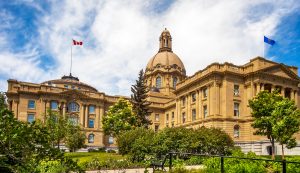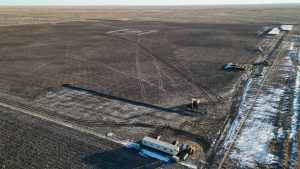The City of Calgary’s director of transportation infrastructure, Michael Thompson, describes 2016 as a "busier year than usual for us" in terms of projects that are either in the planning stages or are under construction.
"One of our big pushes coming into 2016 was to put more projects out to market to help the economy. It’s been a win-win for us, as we have received better pricing and we have helped job promotion," he says.
At the top of the City of Calgary’s transportation infrastructure list is the city’s new 46-kilometre Green Line light rail transit (LRT) route. It connects Calgary’s deep southeast to its northern limits.
Thompson says the Green Line LRT is the largest infrastructure project Calgary has ever undertaken, with city council approving $1.53 billion in municipal funding to the Green Line over the next 30 years.
While this project is still in its "visioning phase," Thompson describes it as more than just a transportation endeavour.
"We consider this a city-shaping project. We’re trying to promote the densification of transit-oriented development around these new LRT stations," Thompson says.
The trains along the new Green Line will be low-floor trains, in keeping with contemporary LRT technologies, and stations will be built smaller and will better integrate into communities. The Green Line will also feature the city’s first LRT tunnel underneath the Bow River.
To complement the new Green Line, the City of Calgary is also building a network of four Bus Rapid Transit (BRT) lines: the Southwest BRT, the 17th Avenue S.E. BRT and the North and South Crosstown BRTs. These lines will connect communities to LRT lines and LRT lines to other transportation hubs and major employment destinations. As part of the new BRT network, bus-only lanes will be constructed along 14th Street S.W. and 17th Avenue S.E.
Enhanced bus stops will also be built, providing more cover and amenities for waiting passengers.
The BRT program has secured $208 million in funding — $78 million comes from the City of Calgary and the balance from the provincial government. Currently, the BRT network is in the planning and design phase, but Thompson says the city is looking to bring on a construction manager to commence work on the enhanced bus stops. Construction on the four BRT lines is scheduled throughout 2017 and 2018.
With the City of Calgary’s emphasis on expanding public transit facilities, the city is looking to buy more buses. And with that comes the need for more storage room.
Consequently, the city broke ground this October on the Stoney Compressed Natural Gas (CNG) Bus Storage and Transit Facility, located in the city’s northeastern Stoney Industrial Area. This facility, which will have room for more than 420 buses, is a specialized design containing safety features that make it suitable for storing compressed natural gas, as Calgary is moving towards a compressed natural gas bus fleet.
The Stoney CNG facility also marks the city’s first outing with the Public-Private Partnership (P3) model.
"We’re bringing on a private company to operate the building. They’re designing it, plus helping to finance it," Thompson explains.
That company is Plenary Infrastructure Calgary LP. The capital cost for this 44,300-square-metre facility comes in at an estimated $174 million.
In addition to the transit-oriented projects, Thompson says the city has a lot of major interchange projects underway. He itemizes the three largest, one being the interchange at Glenmore Trail and Ogden Road S.E. With a price tag of $125 million and an estimated end date of late 2017, this project will increase capacity on one of Calgary’s busiest "commercial goods movement corridors" at one of the road’s most significant bottlenecks — the bottlenecks caused in large part by train crossings.
The interchange features two large bridges, one that allows Glenmore Trail to go up and over Ogden Road and the other above the rail tracks and canal.
Thompson says the two bridges are "near completion."
A second major interchange that will open next year is the Trans-Canada Highway/Bowfort Road N.W. interchange, which sees the Trans-Canada compressed to run below Bowfort Road. The new interchange has dual left turns in all directions and two through lanes in each direction on Bowfort Road.
The third interchange Thompson highlights is Macleod Trail and 162 Avenue S. It marks Canada’s first urban Diverging Diamond Interchange (DDI). The DDI has been described as "traffic on the overpass crosses over to the opposite side of the road at one traffic-signal controlled ramp and then returns to the proper side at the next traffic-signal controlled ramp."
This interchange sees 162 Avenue going over top of Macleod Trail, which will allow Macleod Trail traffic to flow freely through the area. Completion is scheduled for fall of 2017.
"We’re building projects that provide choices for Calgarians as to how they get around the city. First and foremost, it’s about moving people, and we’re offering choices for all modes of transportation," Thompson concludes.











Recent Comments
comments for this post are closed